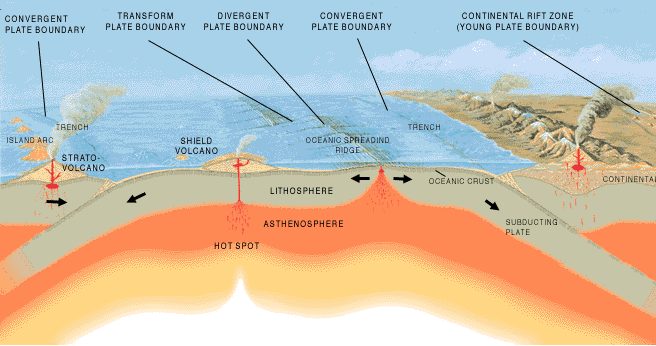Earth's First Continents Rise up from the Oceans
The oldest continental rocks are 4.0 b.y.o., but crust material is always being
formed. There is a continuous cycle of separating ridges and subduction zones, and
these have been processing the crust material for 4 billion years.

The Earth's mantle is made up mostly of olivine. However, the magma that rises up to form the mid-ocean ridges is a mix of olivine, pyroxene, and feldspar. This is because the pyroxene and feldspar melt more quickly, thus are more likely to be contained in the up-welling lava. This solidifies as ocean crust, as basalt
When the basalt mixture slides under the continental plates, or convergent boundaries between ocean plates, it is melted again. And again, the chemistry changes slightly because some material will melt quicker than others in the rock. This recycled basalt rock will be dominated with quartz and feldspar, creating granite.
Granite is the lightest crust material and will float higher than the oceanic crust on the mantle, creating continental crust. Because continental crust is formed by subduction of oceanic crust, IT CAME LATER and there is more now than in the past.
We've seen where the plate have been.. But where are they going?
1.) 30 Million years ago, the earth looked like THIS
2.) Today, the earth looks like THIS
3.) In 100 million years, the earth will look like THIS.
(for comparisons on the same page, click here
and here).
How deep into the Earth can we drill?
Scientists in Russia hold the record, drilling 12 km (nearly 8 miles) down
into the earth crust. Read more here.